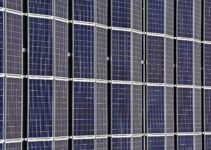Solar energy has gained significant popularity in recent years as a renewable and clean source of power. It offers numerous benefits, including reduced carbon emissions, lower electricity bills, and increased energy independence.
However, like any other form of energy, solar energy also comes with its own set of disadvantages. In this article, we will unveil the dark side of solar energy by exploring the various drawbacks associated with its use.
1. High Initial Costs
One of the major disadvantages of solar energy is its high initial costs. The installation of solar panels, inverters, and other necessary equipment requires a significant investment. While the long-term savings on electricity bills can offset these costs, the upfront expenses can be a deterrent for many homeowners and businesses.
Moreover, the cost of solar panels has been decreasing over the years, but it still remains relatively expensive compared to traditional energy sources. This can make solar energy installations financially unviable for some individuals and organizations.
2. Intermittent Power Generation
Solar energy is dependent on sunlight, which means that power generation is intermittent. Solar panels can only produce electricity when the sun is shining, and their efficiency decreases during cloudy days, at night, or in shaded areas. This variability in power generation poses a challenge for meeting the energy demands consistently.
While the use of battery storage systems can help mitigate this issue to some extent, the additional cost of installing and maintaining these storage systems adds to the overall expenses of a solar energy setup.
3. Dependence on Sunlight
Another disadvantage of solar energy is its dependence on sunlight. This means that solar panels generate less electricity during the winter season or in regions with limited sunlight. Areas that experience frequent overcast skies or have a high number of rainy days may not be ideal for solar energy installations.
The dependence on sunlight also means that solar energy production is location-specific. Places located closer to the equator receive more sunlight throughout the year, making them more suitable for solar energy generation. However, regions located farther from the equator may not receive enough sunlight to make solar energy a viable option.
4. Storage and Distribution Challenges
Solar energy is generated in DC (direct current) form, which is not directly compatible with the AC (alternating current) electrical systems used in most homes and businesses. This requires the use of inverters to convert the DC power into AC power. While inverters are commonly used, they add complexity and cost to the solar energy system.
In addition to the conversion challenges, the storage and distribution of solar energy can be problematic. Excess energy generated during peak sunlight hours needs to be stored in batteries or fed back into the grid. However, the efficiency and cost-effectiveness of battery storage systems are still areas of improvement, and grid integration can be a complex process.
5. Environmental Impact of Solar Panel Production
While solar energy itself is clean and renewable, the production and disposal of solar panels can have environmental implications. The manufacturing process of solar panels involves the use of various chemicals and materials, including silicon, glass, and metals. The extraction and processing of these materials can contribute to pollution and resource depletion.
Furthermore, the disposal of solar panels after their lifespan is a concern. Solar panels contain hazardous materials, such as lead and cadmium, which require proper recycling and disposal methods to prevent environmental contamination.
6. Limited Efficiency in Cloudy or Shaded Areas
Solar panels are most effective when they receive direct sunlight. In cloudy or shaded areas, the efficiency of solar panels decreases significantly. This means that regions with a high number of cloudy days or areas with obstructions like tall buildings or trees may not be suitable for solar energy installations.
Moreover, the presence of dust, dirt, or snow on the surface of solar panels can further reduce their efficiency. Regular maintenance and cleaning are required to ensure optimal performance, which adds to the overall costs and efforts associated with solar energy systems.
Related FAQs
Q: Are solar panels worth the high initial costs?
A: While the high initial costs of solar panels can be a barrier, the long-term savings on electricity bills and the environmental benefits make them a worthwhile investment for many individuals and businesses.
Q: Can solar panels generate power during cloudy days?
A: Solar panels can still generate some power during cloudy days, although their efficiency is significantly reduced. The overall power generation depends on the level of cloud cover and the quality of the solar panels.
Q: What happens to excess solar energy generated?
A: Excess solar energy can be stored in batteries for later use or fed back into the grid. However, the efficiency and cost-effectiveness of battery storage systems and grid integration are areas that need further improvement.
Q: Are there any environmental concerns associated with solar panels?
A: While solar energy itself is clean and renewable, the production and disposal of solar panels can have environmental implications. The manufacturing process involves the use of chemicals and materials, and the disposal of panels requires proper recycling methods to prevent environmental contamination.
Q: Can solar energy be generated in shaded areas?
A: Solar energy generation is significantly reduced in shaded areas as solar panels require direct sunlight. Shaded areas or regions with obstructions may not be ideal for solar energy installations.
Expert Advice
When considering the disadvantages of solar energy, it is important to weigh them against the numerous benefits it offers. Despite its drawbacks, solar energy remains a viable and environmentally friendly option for reducing carbon emissions and promoting sustainable energy practices. It is advisable to consult with solar energy experts and perform a thorough cost-benefit analysis before making a decision.






